# True Permaculture.
Episode 1
Today I'm starting a permaculture series that I think will be very beneficial for anyone with a homestead, or even a townhome with a small yard, you may even find this useful if you are homeless.
This series will cover many topics in permaculture as well as various techniques and systems that can be used as elements within your permaculture design.
Many people ask, what is permaculture? and its really hard to sum it up even into one sentence. Some people say "oh yah thats a way of sustainable gardening right?".
But really sustainable doesnt even cut it, we need to be more proactive then that. If your relationship with your
partner was "sustainable" would you want to marry them?
We need to thrive and to do so we need to be "regenerative". Thats what permaculture is.
When you consult wikipedia you will get this answer:
Permaculture is a set of design principles centered around whole systems thinking simulating or directly utilizing the patterns and resilient features observed in natural ecosystems.
But what True Permaculture is, is a way of living!
Its a way of scientifically designing your life to live in harmony and balance with the ecosystem around you by utilizing the natural flow of the world.
As a permaculturist you try to stack as many functions as possible to become as efficient as you can while repurposing all of your wastes to create abundance rather than constantly going against the grain and creating mass ammounts of pollution in turn.
Permaculture was built upon 3 main ethics and 12 principles that define its structure.
The 3 main ethics are: Earth care, People care, & Fair share, and within fair share we re-invest our surplus back into the community.
These are the 12 principles of permaculture:
- Observe & interact.
- Catch & store energy.
- Obtain a yeild.
- Apply self regulation & accept 5. feedback.
- Use and value renewable resources & services.
- Produce no waste.
- Design from patterns to details.
- Integrate rather than segregate.
- Use small & slow solutions.
- Use & value diversity.
- Use edges & value the marginal
- Creatively use and respond to change
This is the way of life in which we can help heal this planet and restore the abundance that has been lost.
In order really restore that abundance we need to bring the rest of the world onto the same page and help people along by get them into their own permaculture way of living.
To do this I would like to share various techniques and methods that will allow you to live in a way that is regenerative rather than degenerative.
Thats where this True Permaculture series comes in!
Todays topic is:
Sheet Mulching
In permaculture, sheet mulching is an agricultural no-dig gardening technique that attempts to mimic the natural soil-building process in forests. When deployed properly and in combination with other permaculture principles, it can generate healthy, productive, and low maintenance ecosystems. Wikipedia
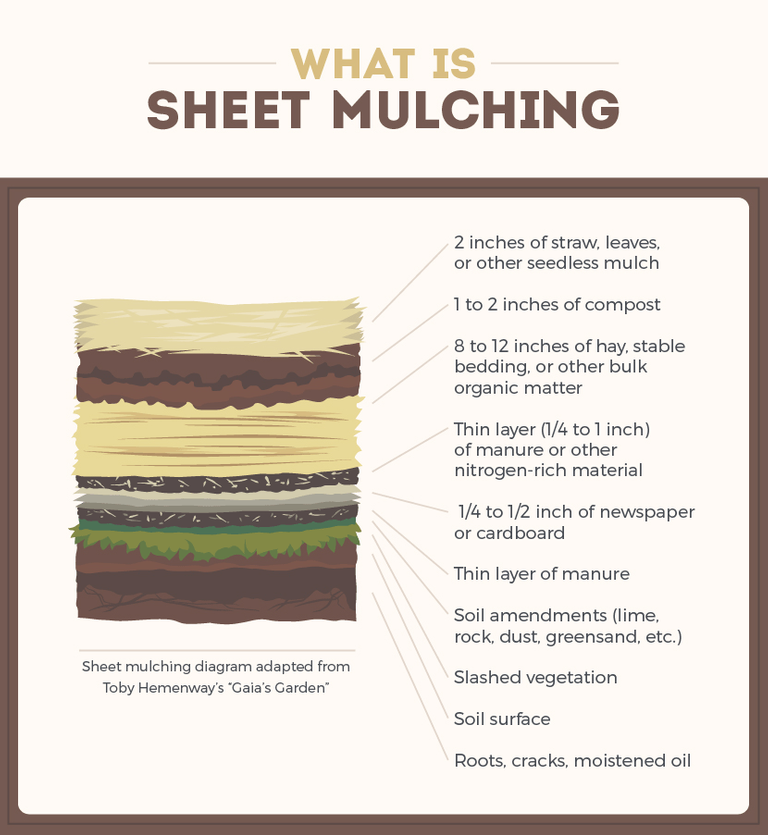
Sheet mulching can be as simple and easy as throwing wet cardboard or paper down on the ground with a thick layer of straw or grass clippings to top it off
As humans, we have the inate ability to make things as complicated as we can, and whereas more complicated isn't always better, in the case of sheet mulching it will most definitely make a higher quality end product.
How compilcated or simple you make it will be a decision that you will want to weigh based on how much time/money/energy you want to initially invest, and how nutrient dense you want your food to be. The more nutrient dense you want your food to be the more complicated the process becomes.
After making this decision you will want to pick your site and get to stacking!
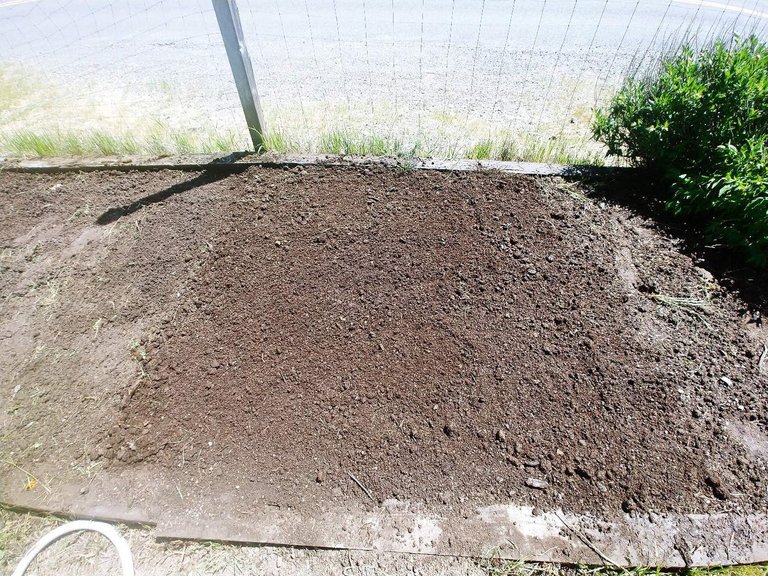
I chose this 6' x 6' spot in my garden which gets sun all day long.
Prepping your site area can include things like spreading some soil ammendments such as lime, compost, rock phosphates, mycorrhizae, guano etc. After that you can loosen the soil by sticking a spade or a pitch fork in the ground then rocking it back and forth. This will aerate the soil and give the microbes a boost and make the nutrients more readily available.
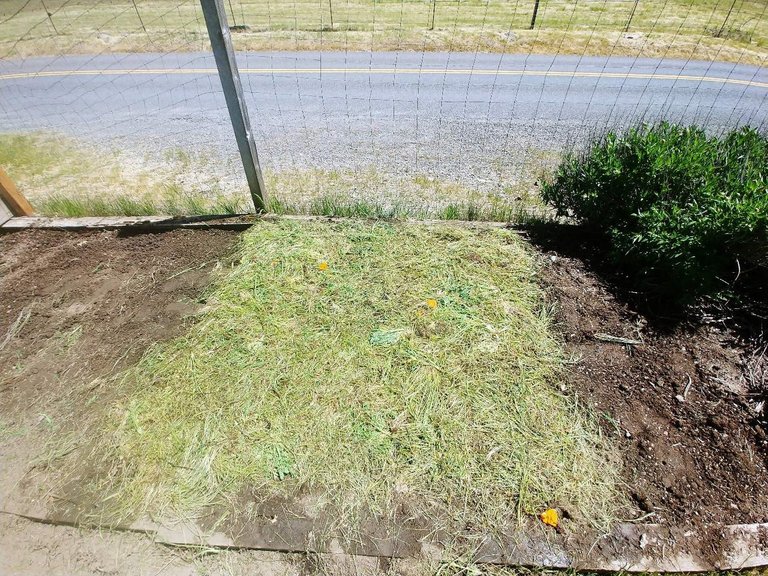
After spreading ammendments you want to water the ground cover it so it doesnt dry out. You can go straight to the cardboard or you can layer in some plant matter(usually the weeds from the area which you chose).
This action attempts to replicate what happens when a hurd of animals comes through an area to graze, they eat the grass, urinate and poop, then stomp grass in on top of it which adds nutrients such as nitrogen phosphorus, calcium, magnesium, sulfur, and many more while encouraging organic matter to decompose.
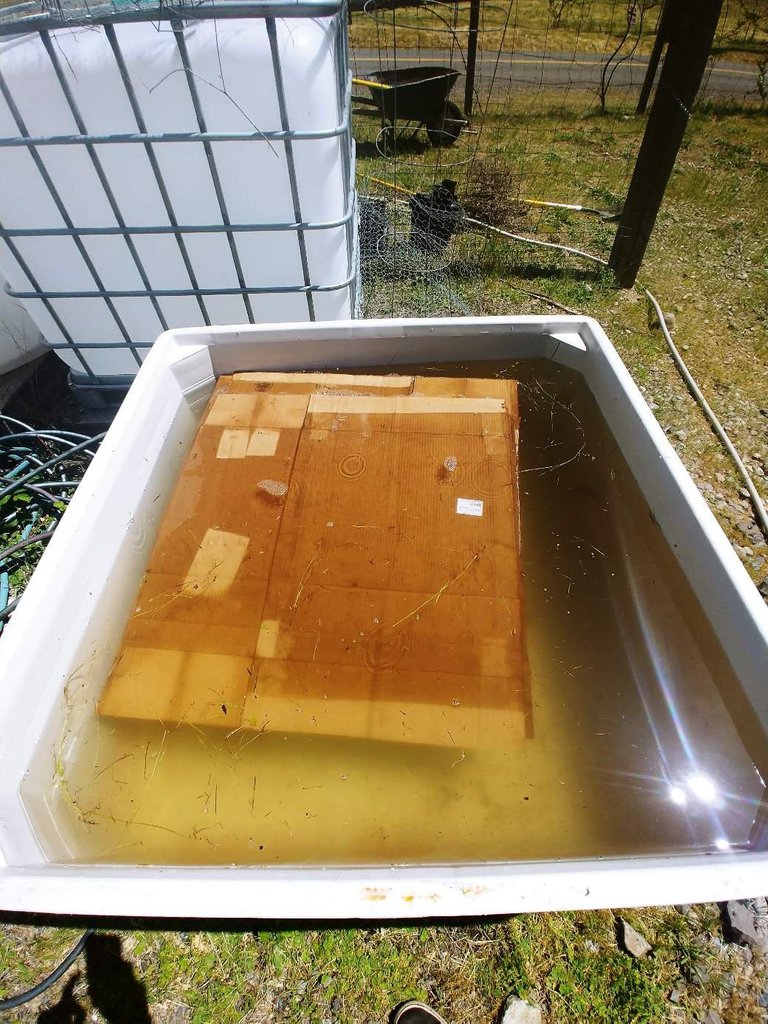
After that you want to get your cardboard wet, I convieniently had a tote full of water so I just dunked them, much faster than spraying them which can take many applications.
When your cardboard is wet you want to lay it out over the area that you have amended.
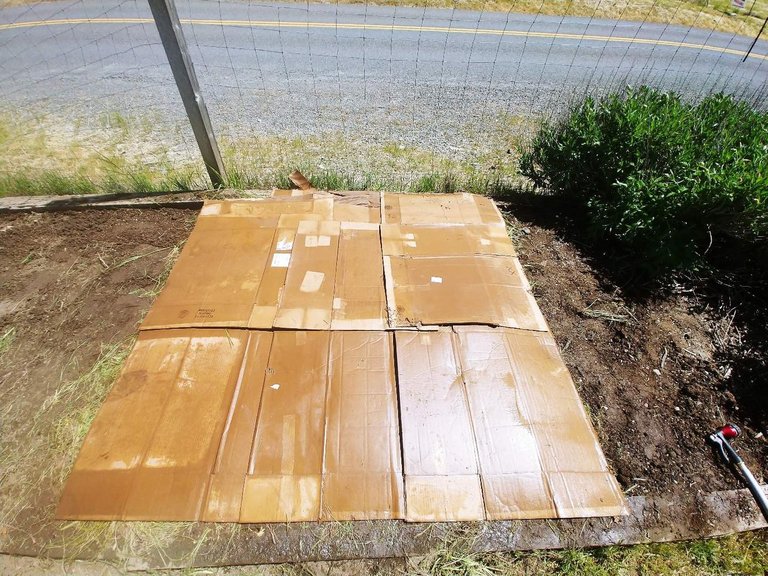
As you can see here you want to overlap the cardboard so that no earth is showing. It only takes 1/30th of a seccond for some weed seeds to germinate so you really want to make sure no light gets through.
Its important not to make this layer too thick as it can block air from reaching the soil below and create anaerobic conditions which encorage pests and pathogenic bacterial growth.
After that its good to add another layer of nitrogen rich material such as compost or manure which will encourage worms and help slowly breakdown the cardboard.
I added manure that had been sitting for years on the property

As you can see here this manure is teeming with microbes such as this beautiful network of mycelium which will aid in the decomposition of the cardboard and the organic waste that I scattered.
I forgot to take a picture of the manure on top of the carboard to show how thick it should be layed but an inch or two should be fine.
When you have finished evenly spreading the compost on you want to water it down then lay a thick layer of straw or dry grass clippings over to prevent the water from evaporating and the bed from drying out.
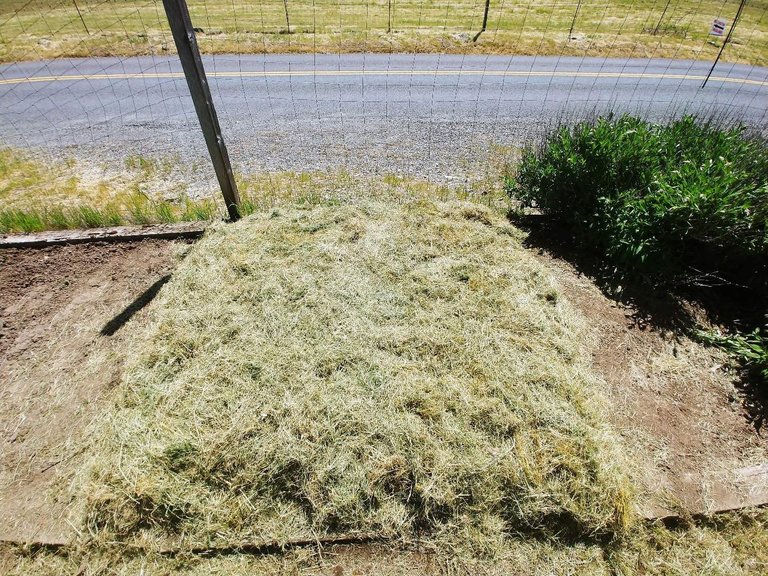
With this type of bed can reduce the ammount of water you have to use drastically when it is layered very thick, you also dont have to use fertilizers because the microbes and soil ammendments that you put down will be plenty sufficient for amazing growth.
If you want to learn more about organic gardening, regenerative agriculture or permaculture feel free to give me a follow and it would be appreciated if you would resteem this article.
Blessings to you all and may you truly live your bliss.
Posted using Partiko Android
Thank you so much for being an awesome Partiko user! We have just given you a free upvote!
The more Partiko Points you have, the more likely you will get a free upvote from us! You can earn 30 Partiko Points for each post made using Partiko, and you can make 10 Points per comment.
One easy way to earn Partiko Point fast is to look at posts under the #introduceyourself tag and welcome new Steem users by commenting under their posts using Partiko!
If you have questions, don't feel hesitant to reach out to us by sending us a Partiko Message, or leaving a comment under our post!
Congratulations @open3ye! You have completed the following achievement on the Steem blockchain and have been rewarded with new badge(s) :
You can view your badges on your Steem Board and compare to others on the Steem Ranking
If you no longer want to receive notifications, reply to this comment with the word
STOPTo support your work, I also upvoted your post!
Do not miss the last post from @steemitboard:
Vote for @Steemitboard as a witness to get one more award and increased upvotes!